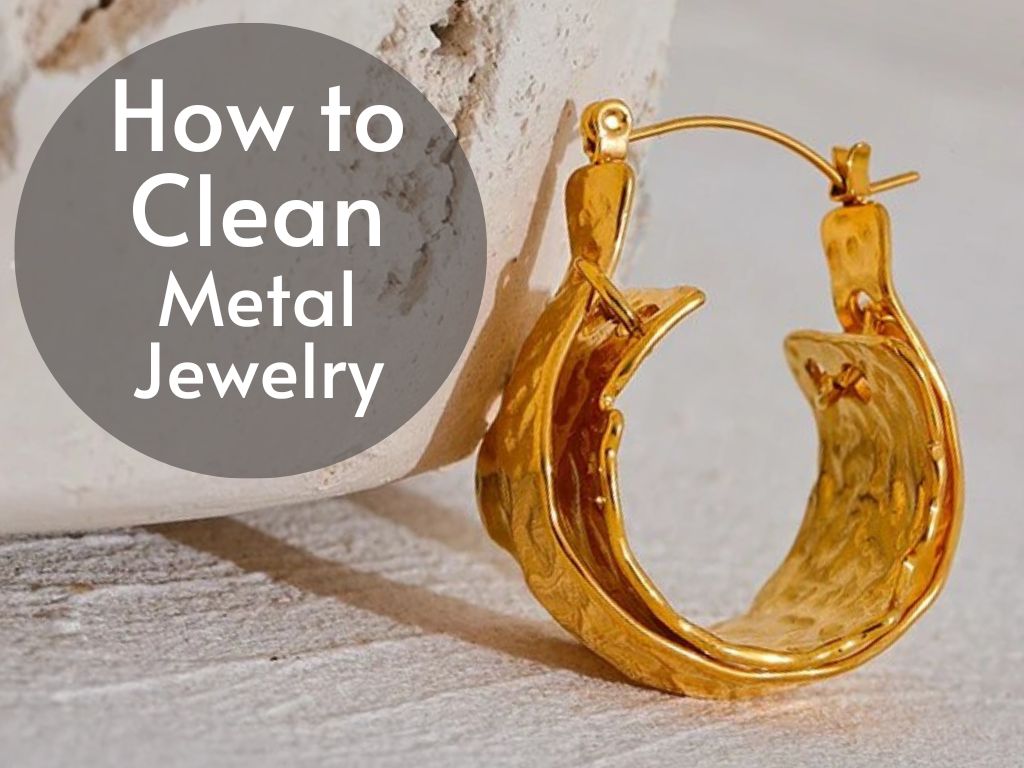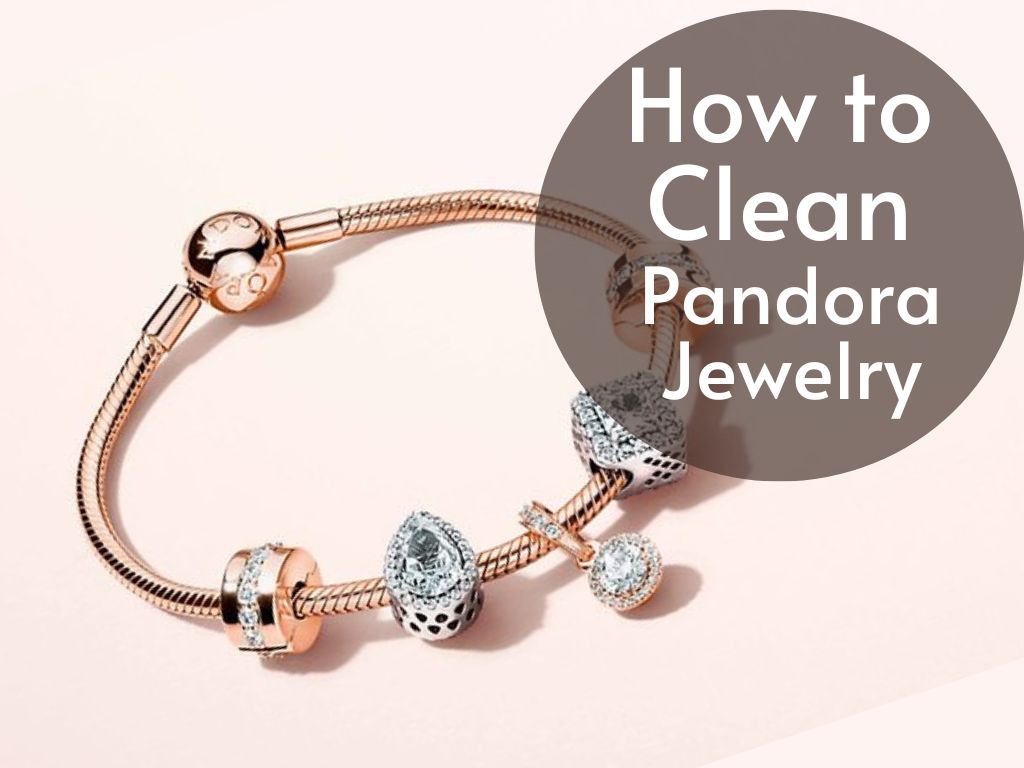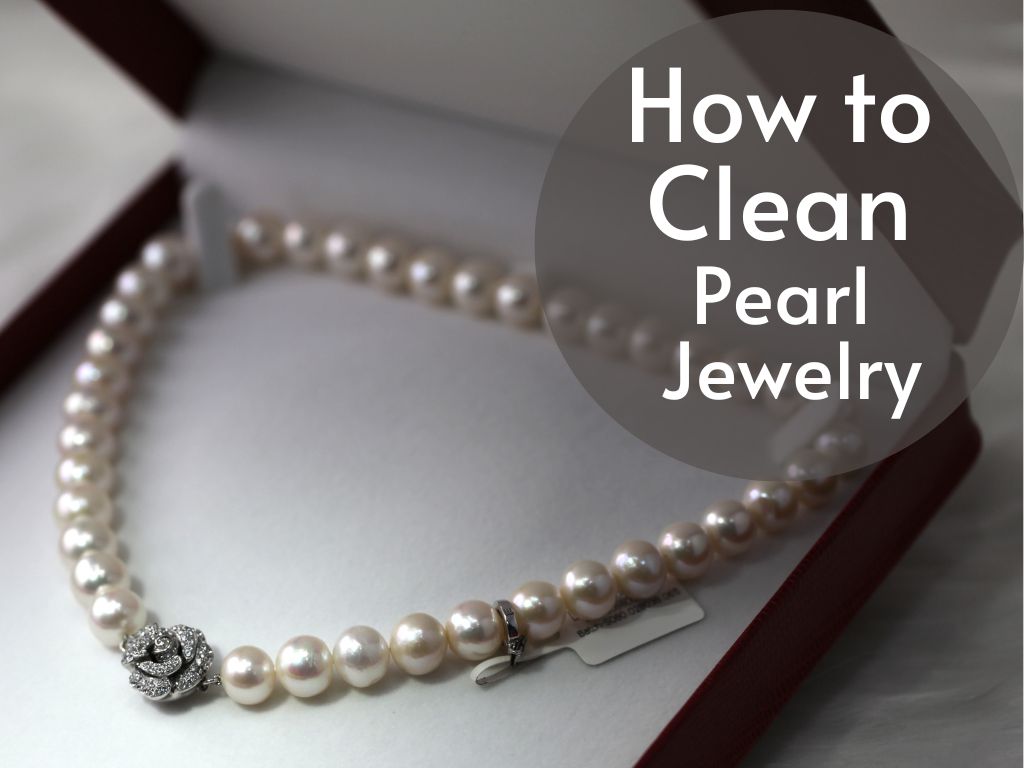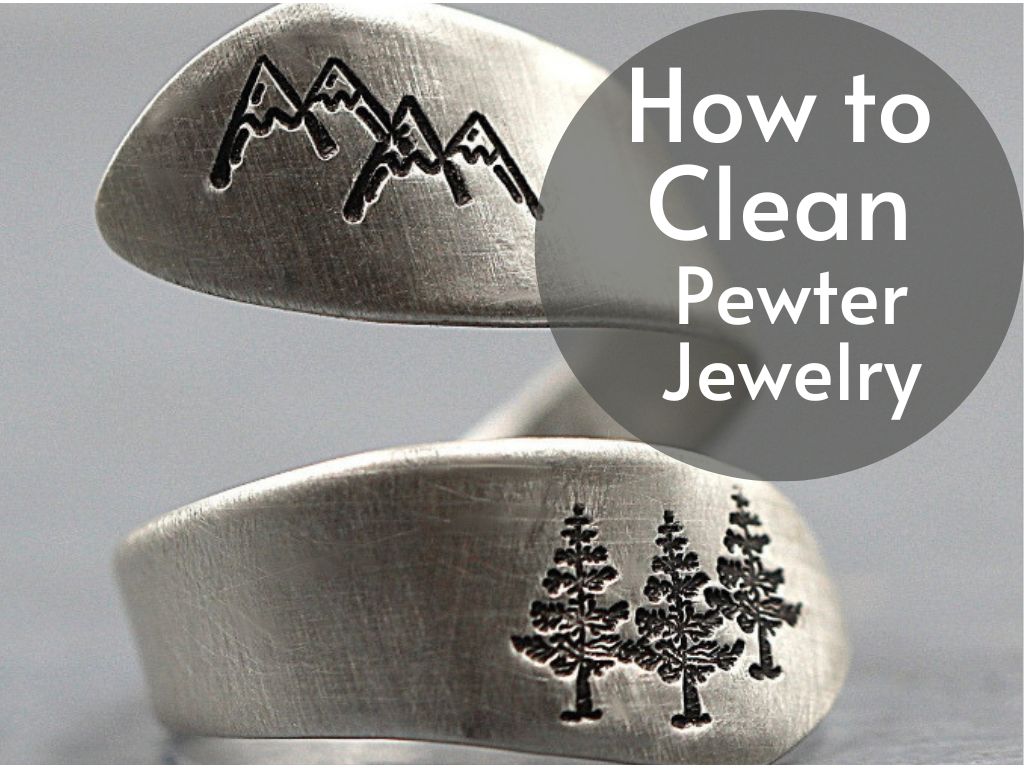Jewelry is not only a beautiful accessory but also an investment that holds sentimental value. Over time, jewelry can accumulate dirt, oils, and tarnish, which can dull its sparkle and diminish its allure. Regular cleaning is crucial to maintain the beauty and longevity of your precious pieces.
Importance of Regular Jewelry Cleaning
Jewelry comes into contact with various elements such as sweat, perfume, lotion, and environmental pollutants on a daily basis. These substances can build up over time and cause jewelry to lose its shine or even become damaged.
By neglecting regular cleaning, these residues may enter crevices and settings, leading to corrosion or loosening of stones. Additionally, certain metals like silver are prone to tarnishing due to exposure to air.
This oxidation process results in a darkened appearance that can be challenging to restore without proper cleaning techniques. Hence, regular maintenance is essential for preserving the brilliance and integrity of your jewelry collection.
Benefits of Using Dish Soap for Cleaning
The market offers numerous specialized jewelry cleaners that claim remarkable results; however, opting for dish soap as a cleaning agent provides several advantages. Firstly, dish soap is gentle enough not to harm most types of jewelry while effectively removing dirt and grime. Its mild formulation ensures that delicate gemstones or metals are not damaged during the cleaning process.
Secondly, dish soap is readily accessible in any household kitchen and does not require any additional expense or special trips to purchase specific cleaners. It’s a convenient solution for those looking for an accessible yet effective method of maintaining their treasured pieces.
Overview of the Outline
This article aims to guide you through the process of using dish soap as an effective means of cleaning your jewelry collection. The outline will cover the following sections:
- Understanding Jewelry Cleaning Basics
- The Science Behind Dish Soap’s Cleaning Power
- Preparing the Cleaning Solution
- Step-by-Step Jewelry Cleaning Process with Dish Soap
- Conclusion
Each section will delve into specific details, ensuring that you have a comprehensive understanding of how to clean your jewelry effectively and safely using dish soap.
Note: Before proceeding with any cleaning method, it is essential to consider the individual characteristics of your jewelry pieces and seek professional advice if necessary.
Different types of jewelry and their cleaning requirements
When it comes to cleaning jewelry, it’s important to understand that different materials require specific care. Gold, for instance, is a popular choice for jewelry due to its durability and resistance to tarnishing. To clean gold jewelry, you can use dish soap mixed with water and gently scrub the surface using a soft-bristle brush.
On the other hand, silver jewelry tends to tarnish more easily. For silver pieces, it is best to create a paste by mixing dish soap with water and apply it onto the surface using a soft cloth or sponge.
Gemstones also have distinct cleaning requirements. While some gemstones can withstand gentle cleaning with dish soap, others may be more delicate or porous, requiring alternative methods.
For example, pearls should never be soaked in water or exposed to harsh chemicals like dish soap as it can damage their luster and structure. Instead, pearls should be wiped gently with a damp cloth after each use.
In addition to gold, silver, and gemstones, there are other materials used in jewelry making such as stainless steel or costume jewelry that have their own unique cleaning requirements. Stainless steel jewelry can typically be cleaned with dish soap diluted in warm water and scrubbed gently with a soft brush or cloth.
Common reasons for jewelry tarnishing or losing its shine
Jewelry may lose its shine over time due to various factors. One common reason is exposure to air and moisture which leads to oxidation on metal surfaces. This oxidation manifests as tarnish on metals like silver and copper-based alloys.
Another factor contributing to the loss of shine is the accumulation of dirt, oils from the skin, lotions, perfumes, and other substances that come into contact with our jewelry on a daily basis. These substances can form layers on the surface of the jewelry, dulling its appearance and reducing its sparkle.
In addition, factors such as environmental pollutants and exposure to harsh chemicals can also play a role in the deterioration of jewelry’s shine. Therefore, it is crucial to clean jewelry regularly to prevent these issues and maintain its original luster.
The significance of using gentle cleaning agents
Using gentle cleaning agents like dish soap is essential for preserving the quality and integrity of your jewelry. Harsh chemicals found in commercial cleaning products may cause damage or discoloration to certain metals, gemstones, or coatings on jewelry. Dish soap, on the other hand, is formulated to be mild yet effective in removing dirt and grime without causing harm.
Its gentle nature ensures that it won’t cause any adverse reactions with most types of jewelry materials. Dish soap is also readily available in households, making it a cost-effective solution for regular jewelry maintenance.
Moreover, using gentle cleaning agents allows you to have better control over the cleaning process. With proper techniques and precautions, you can ensure that your precious pieces are thoroughly cleaned while minimizing any potential risks or damages.
The Science Behind Dish Soap’s Cleaning Power
Composition and Properties of Dish Soap
Dish soap, also known as dish detergent or dishwashing liquid, is a specially formulated cleaning solution designed for removing grease, grime, and food particles from dishes and utensils. Its composition typically consists of surfactants, which are chemical compounds that reduce surface tension between the cleaning solution and the dirt or oils on the jewelry surface.
These surfactants work by surrounding and breaking down oil molecules into smaller droplets, making them easier to rinse away. In addition to surfactants, dish soaps may contain other ingredients such as enzymes, fragrances, dyes, and preservatives.
Enzymes are biological catalysts that can break down organic matter like food particles stuck to dishes. Fragrances and dyes are added for aesthetic purposes but do not affect the cleaning power of the soap.
Preservatives help maintain the shelf life of the product. It is important to choose a mild dish soap without harsh chemicals or additives that could potentially damage or react with certain jewelry materials.
How Dish Soap Interacts with Dirt, Oils, and Grime on Jewelry Surfaces
When dish soap comes into contact with jewelry surfaces that have accumulated dirt, oils, or grime over time, its surfactants go to work. The hydrophilic (water-loving) head of a surfactant molecule attaches itself to water molecules present in the cleaning solution while its hydrophobic (water-repelling) tail attaches to oil molecules on the jewelry surface. This interaction allows the dirt and oils to be effectively lifted away from the jewelry surface and dispersed throughout the cleaning solution.
As you gently agitate or scrub your jewelry with a soft-bristle brush during the cleaning process, these loosened particles detach from their original position. The surfactant molecules form micelles, which are tiny clusters that encapsulate the dirt and oil particles.
This prevents them from redepositing onto the jewelry surface during rinsing. As a result, when you rinse your jewelry under lukewarm water, these micelles along with the dirt and oils get washed away, leaving your jewelry cleaner and refreshed.
Why Dish Soap is Safe to Use on Most Types of Jewelry
One of the advantages of using dish soap for cleaning jewelry is its gentleness on a wide range of materials. The surfactants in dish soap are formulated to be mild enough to clean delicate dishes without causing any damage or corrosion.
Similarly, when used correctly, dish soap is safe for most types of jewelry. Dish soaps do not contain harsh chemicals or abrasives that can scratch or corrode metals like gold or silver.
Additionally, they are typically pH-neutral or slightly alkaline, which helps maintain the integrity of gemstones. However, it’s essential to note that while dish soap is generally safe for everyday use on most jewelry pieces, certain fragile gemstones or materials may require more specialized cleaning methods.
To ensure safety when cleaning your jewelry with dish soap, it’s always a good idea to read manufacturer instructions for any specific care recommendations related to your jewelry pieces. When in doubt about a particular material or gemstone’s compatibility with dish soap cleaning methods, consult a professional jeweler who can provide guidance based on their expertise and knowledge.
Preparing the Cleaning Solution
Choosing the Right Dish Soap Brand
When it comes to cleaning your precious jewelry, it is crucial to select a dish soap brand that is mild and free from harsh chemicals. Harsh detergents can be abrasive and potentially damage delicate metals or gemstones.
Opt for dish soaps that are specifically labeled as gentle or mild, as they are designed to be effective yet safe for various surfaces. Look for brands that do not contain sulfates, phosphates, or strong fragrances, as these ingredients may leave residues or cause allergic reactions.
Mixing Ratios: Water to Dish Soap
Properly diluting the dish soap in water is essential to ensure effective yet gentle cleaning of your jewelry. The ratio of water to dish soap will vary depending on the type of jewelry you intend to clean. As a general guideline, a mixture of one part dish soap to three parts lukewarm water works well for most types of jewelry.
However, certain delicate pieces like pearls or opals may require an even more diluted solution. Take care not to use excessive amounts of dish soap, as this can leave behind residues that are difficult to remove.
Optional Additions to Enhance Cleaning Solution’s Effectiveness
While dish soap alone can effectively clean most jewelry pieces, you can enhance its effectiveness by incorporating optional additions such as baking soda into your cleaning solution. Baking soda acts as a gentle abrasive agent that helps remove stubborn dirt and tarnish without causing any harm.
To use baking soda in your cleaning solution, add a teaspoonful (depending on the quantity) and thoroughly mix it with the diluted dish soap and water mixture until it forms a paste-like consistency. By choosing the right brand of mild dish soap and understanding the appropriate mixing ratios for different types of jewelry, you can create an effective cleaning solution that will safely restore the sparkle and shine of your beloved pieces.
Including optional additions like baking soda can further enhance the solution’s cleaning power, allowing you to achieve remarkable results. Remember, always follow the instructions provided by the dish soap manufacturer and exercise caution when cleaning valuable or delicate jewelry items.
Step-by-Step Jewelry Cleaning Process with Dish Soap
Gathering necessary supplies
To begin the jewelry cleaning process, gather all the essential supplies that will aid in restoring your precious pieces’ radiance. You will need a soft-bristle brush, specifically designed for delicate surfaces, to gently remove dirt and grime without causing any scratches or damage.
Additionally, have a lint-free cloth on hand to carefully dry your jewelry after cleaning. A bowl filled with lukewarm water will be used in conjunction with the dish soap to create the ideal cleaning solution.
Precautions before starting the cleaning process
While dish soap is generally safe for most types of jewelry, it is crucial to take precautions beforehand. Before immersing your jewelry in the cleaning solution, carefully examine each piece and remove any delicate or loose gemstones.
This prevents accidental damage or loss during cleaning. Moreover, if you have antique or vintage pieces with intricate designs or stones that require professional attention, consider consulting a jeweler before attempting any at-home cleaning methods.
Cleaning gold and diamond jewelry
When it comes to gold and diamond jewelry, following a meticulous step-by-step approach ensures optimal results. First, prepare a dish soap solution by adding a few drops of mild dish soap to warm water in the bowl.
Gently stir until well mixed. Next, immerse your gold or diamond jewelry in this solution and let it soak for about 10-15 minutes.
This helps loosen any dirt or residue clinging to the surface. After soaking time has elapsed, use a soft-bristle brush to scrub gently around all areas of your jewelry piece, paying particular attention to hard-to-reach spots like prongs and crevices where grime tends to accumulate over time.
Be gentle yet thorough during this process. Once you’ve completed brushing away all impurities, rinse the jewelry under lukewarm water to remove any remaining soap residue.
Avoid using hot water as it can potentially damage certain gemstones or metals. Carefully dry your gold or diamond jewelry with a lint-free cloth, ensuring no moisture is left behind.
Cleaning silver jewelry
Cleaning silver jewelry requires a slightly different approach due to its tendency to tarnish easily. To start, create a paste by mixing dish soap with water until a thick consistency is achieved. This paste acts as a mild abrasive for removing tarnish without causing damage.
Apply the paste to your silver jewelry and gently rub it in circular motions using a soft-bristle brush. Take care not to scrub too vigorously, as this can lead to scratches.
After applying the paste and thoroughly cleaning all areas of your silver piece, rinse it under lukewarm water to remove any traces of both the paste and tarnish from the surface. Pat dry meticulously with a lint-free cloth until all moisture has been absorbed.
Conclusion
Cleaning your cherished jewelry pieces with dish soap can be an effective way to restore their brilliance and luster. By following these step-by-step instructions and taking necessary precautions, you can safely clean gold, diamond, and silver jewelry at home without needing professional assistance.
Remember that regular maintenance is key in preserving the beauty of your beloved pieces for years to come. With proper care and routine cleaning using gentle methods like dish soap solutions, you can ensure that your jewelry shines brightly on every occasion while maintaining its value and sentimental significance.





